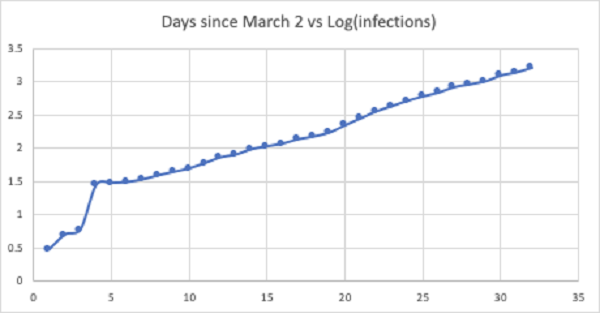Fighting fake news on COVID-19; Data -Fact Check on so-called #COVID19 study
Total Views |
The report by an organisation that goes by the name CDDEP recently caused alarm after reporting that close to 30 Crore Indians may get infected in India by COVID-19. Given that the worldwide case fatality rates of 1-4% or even higher (as in Italy) this caused genuine alarm in many circles.
I decided to go through the report and understand what was the actual methodology used. Interestingly enough the report was devoid of any details on the modeling front (https://cddep.org/covid-19/). However it did provide some hints. As per their slides in https://cddep.org/wp-content/uploads/2020/03/covid19.indiasim.March23-2-eK.pdf

The suite of models comprise both compartmental models as well as agent-based simulations that account for the demography (age, gender) of the Indian population, and can, where appropriate examine the impacts of socio-economic characteristics and access to healthcare on disease outcomes. Here we start with simpler models of transmission that account for the biology and epidemiology of the emerging pathogen to describe potential scenarios for India that account for the tremendous uncertainty that remains in the trajectory of the disease.
So one would not be at fault to assume that the model is going to predict either the total number of infected individuals or (more likely) the proportion of population that is infected based on key demographic attributes of the country in question. But here one encounters a fundamental question, so far we have only observed only China's trajectory in its entirety if we can believe their numbers.
Italy may be turning a corner(https://www.bloomberg.com/news/articles/2020-03-30/italy-reports-fewest-new-coronavirus-cases-in-almost-2-weeks ) but that's still speculative. So one wonders if only one country was used to do the modeling exercise? If that indeed has been done then that means one model built using a single data point got extrapolated to other countries such as India where the underlying predictors may be very different.
This brings us to the second point, The authors of the report themselves concede that India may indeed be better placed due to younger population (27 years median age vs. 37 years in China). That means the underlying variables are indeed different and mathematically such kind of extrapolations may break down considering that the initial model may have been built on a single country.
Usually in these cases, a simple exponential model where the logarithm of infection count is modeled as a straight line against the time parameter works well. It seems to be working for India as well. The following is the data over the last 32 days from MOHFW site (via wikipedia).

A linear extrapolation says on 64th day, that is 32 days from today the infection count will be close to 3.8L (log being 12.87) with the present trajectory. Its not a happy scenario for sure but its nowhere close to the apocalyptic 30Crore infection count also. On the other hand today's report of the Government asking railways to create 20K coaches into isolation units to cater to 3.2L people is surprisingly close to this number.
So yes, we need to listen to the directives from the local authorities, stay indoors as much as possible and help out the poor to the best of our abilities. But lets not pay heed to alarmist nonsense.
Also Read :

